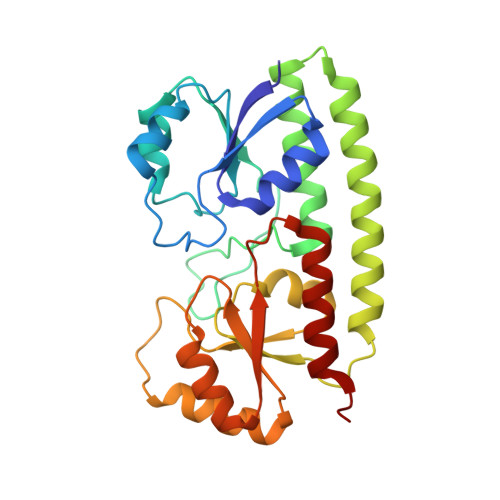Possible regulatory role for the histidine-rich loop in the zinc transport protein, ZnuA.
Wei, B., Randich, A.M., Bhattacharyya-Pakrasi, M., Pakrasi, H.B., Smith, T.J.(2007) Biochemistry 46: 8734-8743
- PubMed: 17616151
- DOI: https://doi.org/10.1021/bi700763w
- Primary Citation of Related Structures:
2OV1, 2OV3 - PubMed Abstract:
A number of bacterial metal transporters belong to the ABC transporter family. To better understand the structural determinants of metal selectivity of one such transporter, we previously determined the structure of the periplasmic domain of a zinc transporter, ZnuA, from Synechocystis 6803 and found that ZnuA binds zinc via three histidines. Unique to these ABC zinc transporters, ZnuA has a highly charged and mobile loop that protrudes from the protein in the vicinity of the metal binding site that we had suggested might facilitate zinc acquisition. To further examine the function of this loop, the structure and zinc binding properties of two ZnuA variants were determined. When the loop is entirely deleted, zinc still binds to the three histidines. However, unlike what was suggested from the structure of a similar solute binding protein, TroA, release of zinc occurs concomitantly with large conformational changes in two of the three chelating histidines. These structural results combined with isothermal titration calorimetry data demonstrate that there are at least two classes of zinc binding sites: the high-affinity site in the cleft between the two domains and at least one additional site on the flexible loop. This loop has approximately 100-fold weaker affinity for zinc than the high-affinity zinc binding site, and its deletion does not affect the high-affinity site. From these results, we suggest that this region might be a sensor for high periplasmic levels of zinc.
Organizational Affiliation:
Donald Danforth Plant Science Center, 975 North Warson Road, St. Louis, Missouri 63132, USA.














